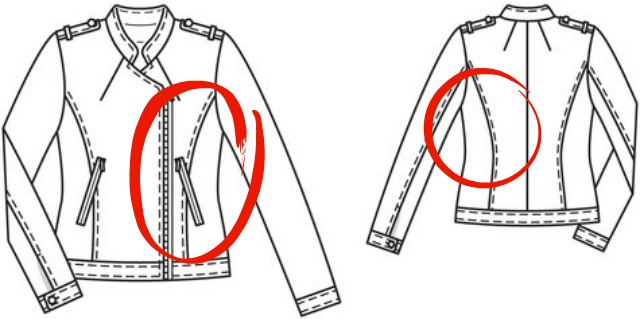
The princess seam is perhaps ubiquitous and therefore not as appreciated as it should be. Or maybe it’s the name that turns us off. This is a great seam for fit and fitting. It runs over the bust in the front, separating the center of the garment from the sides. It allows for a more fitted garment and lends itself to easy alterations. More fabric can be added at this seam for a larger bust, or rounded belly. It’s just as easy to take in excess fabric here for a small bust. The princess seam can also expand or contract over the hips if the seam extends down that far.
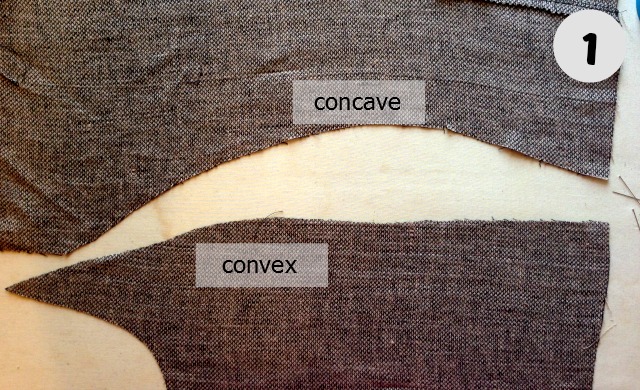
When cutting out a garment with a princess seam you will notice that the center piece of the garment, center back or center front, will have an inward curve (concave) and be shorter in length on the princess seam than the garment’s side front or back pieces which have an outward shaped (convex) curve. There is a trick to putting the two opposites together without it looking homemade; proper easing and pressing.
I only just realized today that all my sewing books recommend to stay stitch the center front or back between the notches of the princess seam and then, within the seam allowance make snips an inch apart in order to spread this concave curve wide so it will fit into the longer convex curve. I learned a different way at school. I think it’s a faster way and certainly a way that if you need to let out the seam a little you can because the seam allowance has not been snipped. Full disclosure; I was not learning to be a seamstress but rather a fashion designer so shortcuts may have been taken. Here’s how I learned to sew a princess seam.
(Note: When making a muslin to test for fit cut the seam allowances of a princess seam an inch wide to have plenty of fabric to let out for fitting adjustments if needed.)
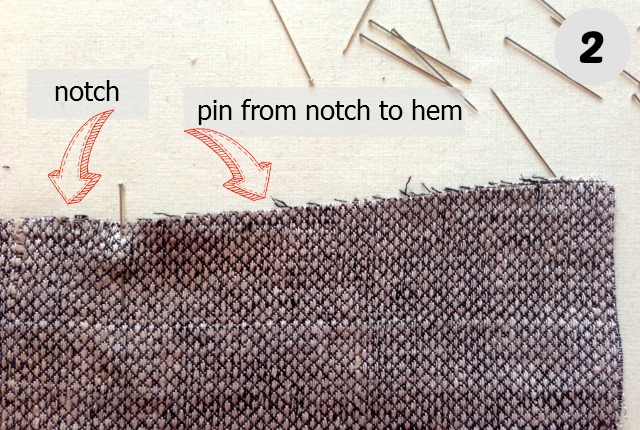
The princess seam on both the center and the side pattern pieces should have two notches indicating where you need to ease the curves into each other. The fabric above and below these notches will lay flat and are simply pin together. My pdf pattern came with only one notch toward the top so I made the bottom notch at the waist line which was marked on my pattern.
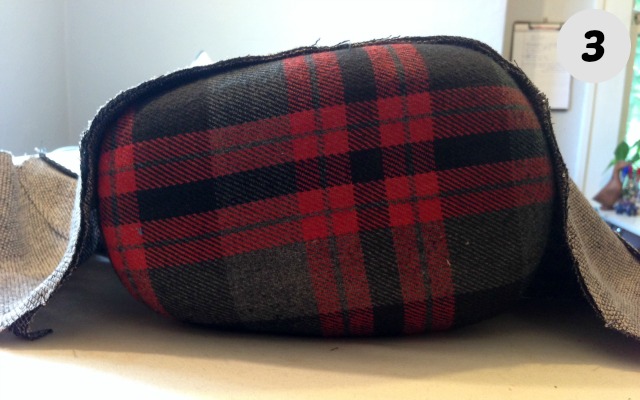
Line up the notches of the center and side pieces together on the princess seam and pin them together from notch to hem, right sides facing. Pin from upper notch to armscye seam. With the center front or back piece, (the concave, inward curve) on top of the side piece (convex, outward curve), bend the fabric pieces in an arch, as if they are draping over a tailor ham.
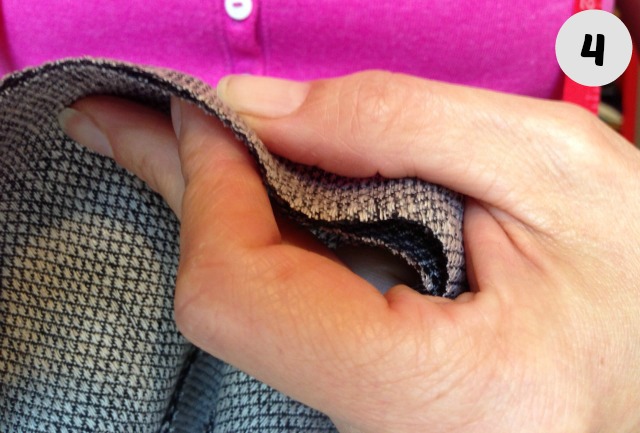
With this bend or cupping going on you can ease the two opposite curves together easily. This cupping of the shorter seam over the longer seam helps the longer, convex seam ease into the shorter, concave seam.
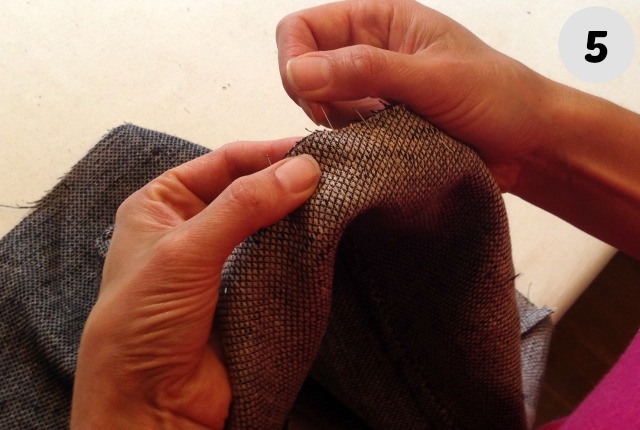
Take your time easing and pinning the two curves into each other between the notches. Place the pins perpendicular to the seam line, not parallel. When you have it fitting together sew the seam from armscye to hem. Iron the seam in the opposite direction from the stitching. Open up the seam to check that there are no puckers. Clip the center piece’s seam allowance between the notches where needed so it lays flat and notch (removing a little slice of fabric) the seam allowance of the side pieces.
Open the seam flat, lay on a tailor ham or rolled towel (something mimicking the curve of the body which the seam will lay over when the garment is on) and press the seam allowances open or press both seam allowances toward the center if you are top stitching the seam allowance down.
The princess seam on the backs of garments will fit together a little easier since they do not have to fit over such large curves as they do on the front of you. I have a wide back (not curvy) and find the princess seam is a perfect place to make a fitting adjustment for this.
